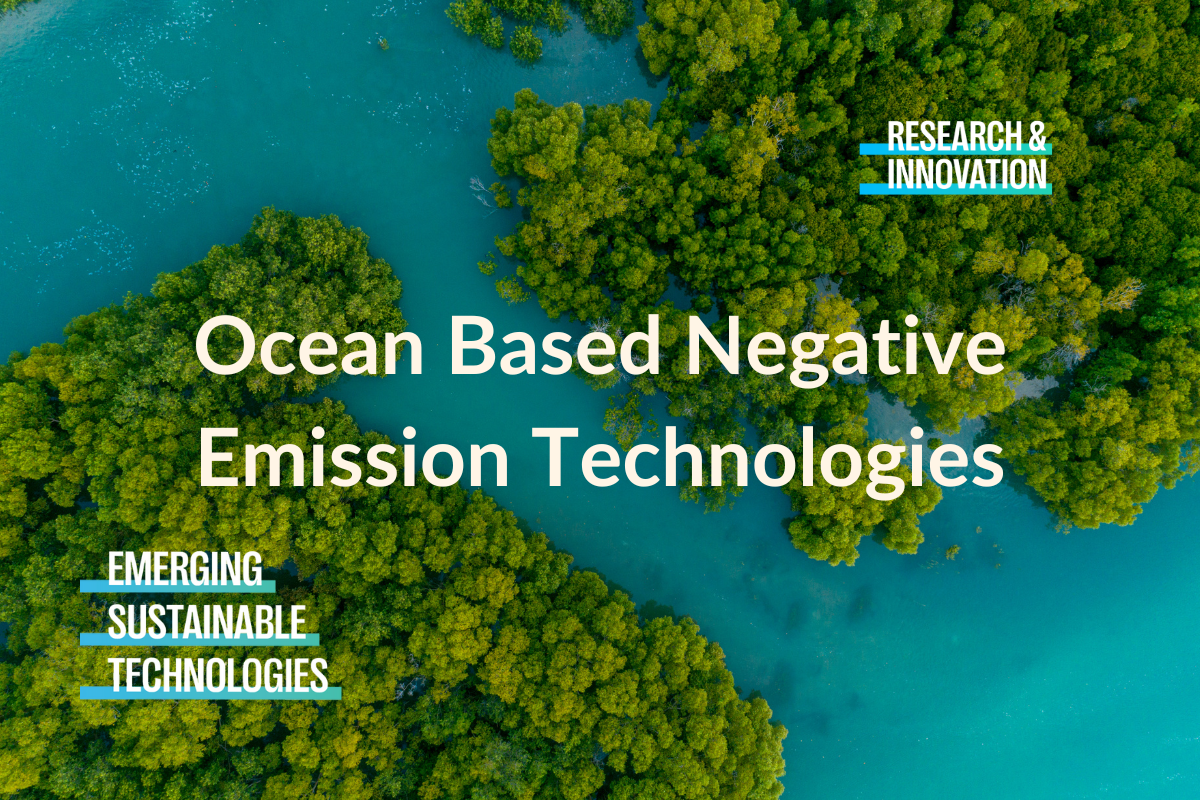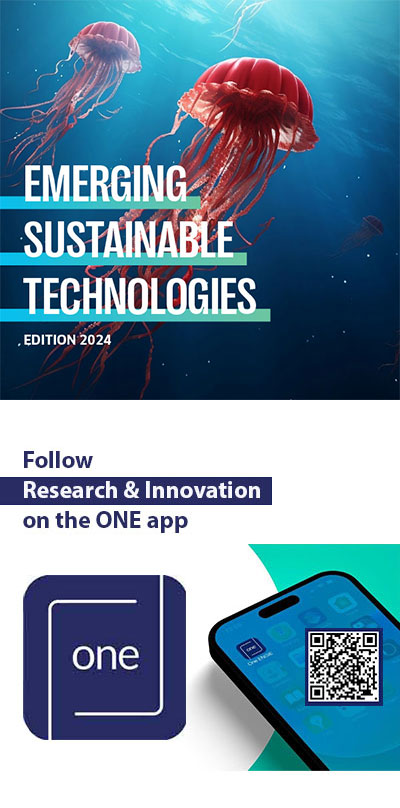Ocean-based Negative Emission Technologies provide Carbon Dioxide Removal by displacing CO2 from the atmosphere into the ocean. Along with land-based solutions, these technologies will be needed to mitigate global warming.
Before deploying any of these technologies at scale, they should be derisked and all impacts thoroughly understood, which is today not yet the case.

Humanity cannot limit global warming to 1.5 °C unless much more action is taken. In addition to the primary mitigation measure of reducing emissions to nearly zero, humanity must also actively remove CO2 from the atmosphere.
What are ocean-based negative emission?
Ocean-based Negative Emission Technologies (ONETs) cover a range of geo-engineering methods to reduce atmospheric CO2 levels by enhancing ocean carbon sinks. ONETs allow the displacement of CO2 from the atmosphere, where it contributes to global warming through the greenhouse effect, to where it does not, into marine stock. Before deploying any of the technologies presented below at scale, they should be derisked and all impacts thoroughly understood, which is today not yet the case.
Direct Ocean Carbon Capture & Storage (DOCCS)

| Capture and remove carbon from seawater to store it in marine or geological reservoirs. More information on DOC in our previous article |
Advantages: Fights ocean acidification and draws CO2 from the atmosphere.
| Challenges: Low TRL, unknown potential risks for ecosystems (anoxia), high energy needs
|
Artificial Upwelling
Bringing nutrient-rich seawater from the deep ocean to the surface stimulates photosynthesis & CO2 uptake. According to Kearney & the Energy Transition Institute (2019), the vertical motion can be attained through passive means, such as the utilization of salinity and temperature disparities and wave energy, as well as active methods involving electrical pumps or the introduction of bubbles through air lift mechanisms.
| 
|
| Advantages: nutrient rich water, could be coupled with aquaculture | Challenges: low TRL, potential CO2 exchanges with the atmosphere, unknown potential impact on marine ecosystems and potential usage competition (shipping, fishing) |
Crop Residue Ocean Permanent Sequestration (CROPS)

| Storing biomass underwater within the profound oceanic region, specifically below depths of 1,000-1,500 m, where the anticipated lack of oxygen is believed to impede the process of decomposition.
|
| Advantages: no competition in terms of land or water use. | Challenges: low TRL, unknown potential impact on marine ecosystems, high transportation costs. |
Ocean fertilization
The addition of iron or macronutrients such as nitrogen and phosphorus to the upper sunlit layers of the ocean serves as a means to provoke the growth and photosynthesis of phytoplankton. These vital processes enable phytoplankton to sequester CO2 in their biomass, leading to an augmentation in the carbon absorption of the upper ocean. The demise of phytoplankton and subsequent sinking of their biomass into the depths of the ocean allows for the storage of the fixed carbon at considerable depths, with the potential for longevity exceeding 100 years.
| 
|
| Advantages: high potential, nutrient rich water | Challenges: low TRL, unknown potential impact on marine ecosystems and GHG emssions. |
Ocean alkalinity enhancement

| The enhancement of the carbon storage capacity of seawater can be achieved by increasing the alkalinity of the upper ocean, thereby allowing for the uptake of more CO2 by the ocean. Ocean alkalinity enhancement approaches involve introducing alkaline minerals or solutions into the ocean. Subsequently, they react with CO2 and water, resulting in the formation of bicarbonate (HCO3 – ) and carbonate (CO3 2-) ions.
|
| Advantages: fights ocean acidification, high scalibility & potential, draws CO2 from the atmosphere | Challenges: low TRL, mining required (high energy intensity), unknown potential impact on ecosystems |
Seaweed cultivation and sequestration
Seaweeds have the potential to be either cultivated or acquired from invasive species, such as Sargassum. By sinking seaweed into the deep depths of the ocean, it is possible to enable the long-term sequestration of carbon
| 
|
| Advantages: jobs and livelihoods in seaweed cultivation, bio-fuels are possible | Challenges: low TRL, uncertainty about storage timescale, ethical concerns and unknown potential impact on ecosystems |
Coastal Blue Carbon

| Carbon is captured and stored in coastal ecosystems. The primary blue carbon ecosystems for mitigation include mangroves, tidal mangroves, and seagrasses. Newly recognized blue carbon ecosystems comprise macroalgae, seafloor sediments, and mud flats. More information on Coastal Blue Carbon in 2023's Report on Sustainable Emerging Technologies
|
| Advantages: TRL6, reduces water pollution, increases food security and preserves biodiversity | Challenges: GHG emissions, not included in Land Use, Land Use Change & Forestry (LULUCF) sector |
Highlight map of some pilot and demonstrator projects

Read more and discover more innovative sustainable technologies, their advantages and their challenges in ENGIE’s 2024 report on Sustainable Emerging Technologies:
Contributions and Acknowledgments:
- Bart Ghysels
- Sarah Palhol
- Ngoc Han Huynh Thi
- Jonas Pigeon
- Elodie du Fornel
- Elodie Le Cadre Loret
- Jan Mertens
- Jean-Pierre Keustermans
- Céline Denis
- Olivier Sala



